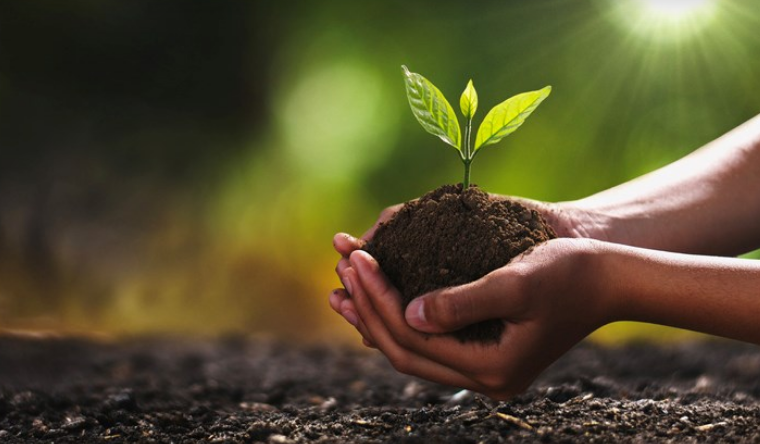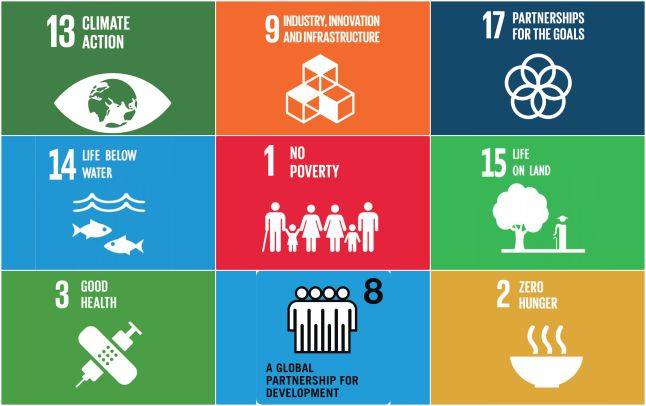
Plants are the source of the air we breathe and most of the food we eat,
yet we often don’t think about keeping them healthy.
This marks our small little tribute!
Introduction
As the United Nations General Assembly declared 2020 as the International Year of Plant Health (IYPH). The year was looked upon by all as an opportunity to raise awareness on how important it was for us to protect plant health in an attempt to secure the United Nations Sustainable Development Goals 1, 2, 3, 8, 9, 13, 14, 15, and 17

As the FAO has estimated, 40% of food crops are believed to be lost to plant pests and diseases around the world annually. Keeping in view the need to feed a large number of the populations especially in LDCs, where we have people without enough food to eat. Such nations are primarily dependent on agriculture as a source of income.
Ecosystems are currently being altered due to climate change, and human activities in an unpredictable pattern. Reducing biodiversity and creating new niches where pests can thrive are the visible result.
International travel and trade has tripled in volume in the last decade and can quickly spread pests and diseases around the world causing great damage to native plants and the environment. Hence, the importance gets focused towards the international cooperation in the field of plant protection and quarantine. Protecting plants from pests and diseases is far more cost effective than dealing with full-blown plant health emergencies should such a case arise. Plant pests and diseases are often impossible to eradicate once they have established themselves and managing them is time consuming and expensive as has been the recent case experienced across the country with respect to the FAW infestation in maize.
Therefore, prevention is critical to avoid devastating impact of pests and diseases on agriculture, livelihoods and food security.
Plant pests and diseases, can be reasonably be controlled with an environmentally approach i.e. integrated pest management or integrated crop management. Such approaches combine different management strategies and practices to grow healthy crops while minimizing the use of pesticides. Avoiding poisonous substances when dealing with pests not only protects the environment, it also protects pollinators, natural pest enemies, beneficial organisms and the people and animals who depend on plants. However, such approached need in-depth knowledge of the traditional agricultural practices region wise, rather than a blanket approach or singular guidance approach.
One of the overseas travel advisories that we need to adapt is to avoid taking plants and plant products with them when travelling across borders personally.
People in the transportation industries need to make sure that ships, airplanes, trucks and trains don’t carry plant pests and diseases into new areas. If they do, comply with the plant quarantine norms in force.






Impact of the Pandemic on Agriculture
Amid the pandemic, agricultural activities related to production and marketing have been deemed “essential services” and were not restricted in any state.
Logistics however was challenging. Lockdowns had shut the operations of retail sellers and restricted their movement, constrained the movement of goods severely, closed processing units that consume agricultural commodities, and—despite their essential service tag—shut down some local mandis and agro-markets. As the country began to open up again, the impact of the pandemic lockdown on the different sub-sectors revival is slow, if not at stake. The farming communities have been at their farming best during this period and had not only helped assure food security but provided a hope of the same being maintained further through their continued selfless dedication towards farming.
Battling locust infestation in the time of a global pandemic
Amidst the current pandemic, both South Asia and Africa experienced different intensity of outbreaks, posing challenges to national food security. In India, particularly, has been the worst impacted, with more than 50,000 hectares across norther and central Indian states. Locust attack on crops and agricultural fields, are known to eat twice their body weight, and a swarm in a single day can destroy enough food to feed 35,000 people.
The problem wasn’t India’s alone. 2020 attack had been declared the the worst in the three decades. The corridor from East Africa to the Middle East, and into Asia from Iran, Afghanistan, Pakistan and into India have caused widespread havoc unlike anything from recent memory. It is believed that our neighbouring country Pakistan, did negligible efforts to control the locusts in their country. This makes us to think whether such acts of neighbouring countries may be classified as a deliberate attempt leading to be classified as an act of bioterrorism.
Coming back to the locust infestation, efforts in general to curtail the crisis have proved to be challenging during this pandemic. The swarms normally cover as much as 16-30 million sq. km, incredibly difficult to predict when they will arrive unless more so as the locust control centres had lowered their guard during the last 2 decades, looked upon as a cost cutting approach of governments. On the other hand, thought that the FAO owned the sole responsibility to track such locust swarm developments. The horn of Africa is a frightening example of this as it is already home to 23 million severely food insecure people and has more than 12 million forcibly displaced as the outbreak began to set in. The travel to India had further been underestimated, and devastating.
These issues became even more paramount as a result of the COVID-19 pandemic, in which efforts to control the locusts have been greatly affected by factors such as restrictions on travel and shipping, increasing the risk of food insecurity.
The country has already been experimenting with different methods to battle the new wave of locusts including deploying drones, using fire trucks, and even playing loud music in an effort to move them away from their crops. Apart from the traditional methods adopted by the farming communities having experienced the locust attacks 30 years ago or so that had been passed on through generations.
Reactive technologies were adopted, supposed to have proven effective. Yet such technologies still require to be further evaluated and validated.
Open data has the ability to empower and engage these local communities like never before by encouraging them to work and farm smarter so that they are better empowered to predict and act on potential crises months in advance, instead of having to deal with them ad-hoc.
As 2020 nears an end, this IYPH2020 demonstrated the importance of Plant Health even more, especially during these testing times of experiencing a Pandemic. A first for most of us, if not all. Together we have learnt to respect both our farmers and health workers for our survival during a pandemic, with a lot of help from digital technology to assist in attaining the same.
Plant health to ensure food and nutritional security!















